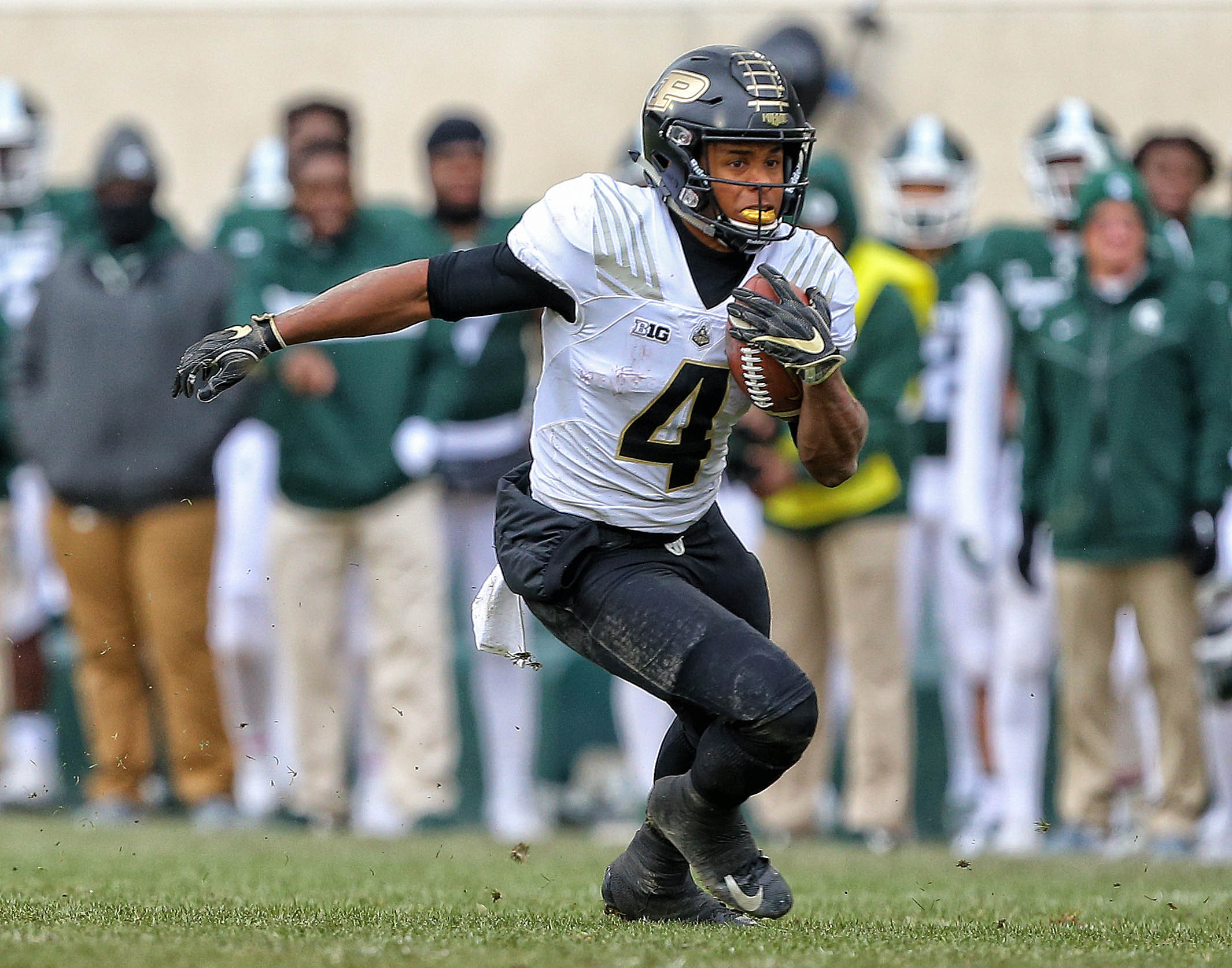Ad Disclosure

Yes, Rondale Moore really is good enough to be the first receiver to win the Heisman Trophy in three decades
Talent is supposed to be the driving force behind determining which college football star deserves to win the Heisman Trophy each year. When it comes to Purdue receiver Rondale Moore, though, history is a key factor that can’t be ignored.
Your view on history might determine whether or not you believe Moore, a consensus All-American as a true freshman last fall, has a legitimate shot to add his name to the prestigious list of college football greats.
On one hand, it’s been nearly 30 years since Michigan’s Desmond Howard staked his claim to the Heisman Trophy in 1991, the last time a wide receiver hoisted the hardware. Then again, Moore is just the third true freshman to ever earn consensus All-American honors, along with former greats Herschel Walker (Georgia, 1980) and Adrian Peterson (Oklahoma, 2004). Walker won the Heisman Trophy in 1982 and Peterson was on his way to an award-winning season in 2006 until a broken collarbone abruptly ended his year.
Moore joined elite company with his All-American selection, but the reality is the deck is stacked against him when it comes to winning the Heisman. While we’d like to think everyone starts with a fair slate, the reality is that it’s been a quarterback award with a few running backs peppered into the mix. Since 1990, only four receivers have finished in the top three in voting, the most recent being Alabama’s Amari Cooper in 2014.
| Year | Player (school) | Heisman finish |
|---|---|---|
| 1991 | Desmond Howard (UM) | Winner |
| 1993 | David Palmer (Bama) | Third |
| 2003 | Larry Fitzgerald (Pitt) | Second |
| 2014 | Amari Cooper (Bama) | Third |
So, yeah, as good as Moore is, he still has a pretty steep hill to climb if he even wants to get legitimate consideration as a Heisman contender. But if there’s a receiver talented enough to overcome those obstacles, it’s Moore.
Considering the amount of success he had as a true freshman, it would be surprising if the Purdue receiver didn’t make the trek to the Heisman ceremony at least once in his career. Remember, Moore wasn’t just a consensus All-American selection, he was also named the B1G Freshman of the Year and Wide Receiver of the Year; significant accomplishments in a Power Five league.
The argument against receivers is often that they don’t get enough touches to make as much of an impact as other positions (which is why the Heisman has become a quarterback award, more or less). In Jeff Brohm’s offense, though, Moore getting the football really isn’t an issue.

Last season, Moore’s versatility was utilized to the max. Not only did he lead college football with 114 receptions (12 more catches than anyone else in the sport), Moore’s speed and elusiveness were used in the run game and on special teams. He ended the year with 1,258 receiving yards (11th in the NCAA) and 2,215 all-purpose yards, third-highest in football.
Moore was the only player with over 150 touches who averaged more than 10 yards per play. While Moore was most productive as a receiver in his first year with the Boilermakers, he was also very productive in just about every other statistical category:
| 2018 stats | Touches | Total Yards | Average | TDs |
|---|---|---|---|---|
| Receiving | 114 | 1,258 | 11.04 | 12 |
| Rushing | 21 | 213 | 10.14 | 2 |
| Punt Return | 12 | 82 | 6.83 | 0 |
| Kick Return | 33 | 662 | 20.06 | 0 |
| All-Purpose | 180 | 2,215 | 12.31 | 14 |
Not many players possess the same versatility as Moore. Though he’s undersized as a wide receiver — standing just 5-foot-9 — Moore has found a way to be effective and productive in nearly every situation.
It’s hard to find many players with that type of ability.
And if the numbers from his true freshman season aren’t enough to make a convincing Heisman argument, he’s provided plenty of highlight moments to captivate the college football world.

Moore registered 313 all-purpose yards in Purdue’s season opener against Northwestern, his first collegiate game. He racked up a total of 252 yards and two touchdowns in the Boilers’ upset win over Ohio State. Time and again, Moore was on the highlight reel making improbable play after improbable play.
Perhaps the biggest detriment to Moore’s Heisman chances will actually be his future teammates. Brohm and his staff are targeting more talented receivers on the recruiting front, and are already bringing two four-star talents — David Bell and Milton Wright — to accompany Moore in the passing attack. Obviously, that’s a good thing for the Boilermaker offense, but it could potentially lead to a dip in Moore’s touches in future seasons.
It’s not exactly a bad problem. Nonetheless, Purdue’s gain could be Moore’s loss in terms of reproducing his 2018 numbers and battling for a shot at the Heisman. Still, based on Moore’s production from his freshman season, his versatility and play-making ability, the Purdue receiver has a great opportunity to nudge his way into the conversation.
And, let’s be honest, Brohm isn’t going to steer away from giving his star as many touches as possible, even with the incoming talent.
History tells us that Moore will have to produce improbable numbers to have a shot to win the Heisman. Even that might not be enough, considering how underrepresented the position has been over the last 30 years.
Then again, Moore is more than capable of making a little history himself.
Dustin grew up in the heart of Big Ten country and has been in sports media since 2010. He has been covering Big Ten football since 2014. You can follow him on Twitter: @SchutteCFB